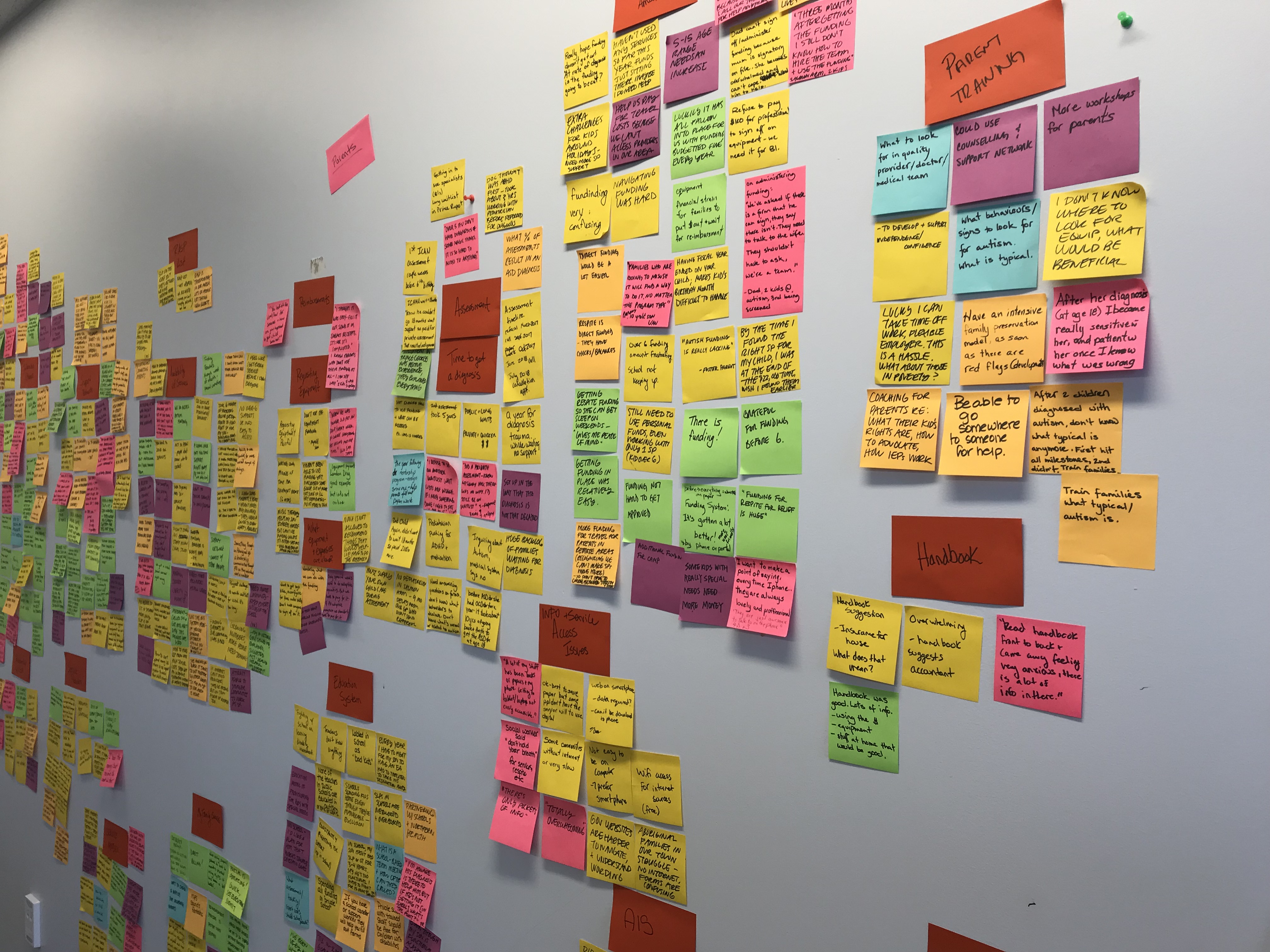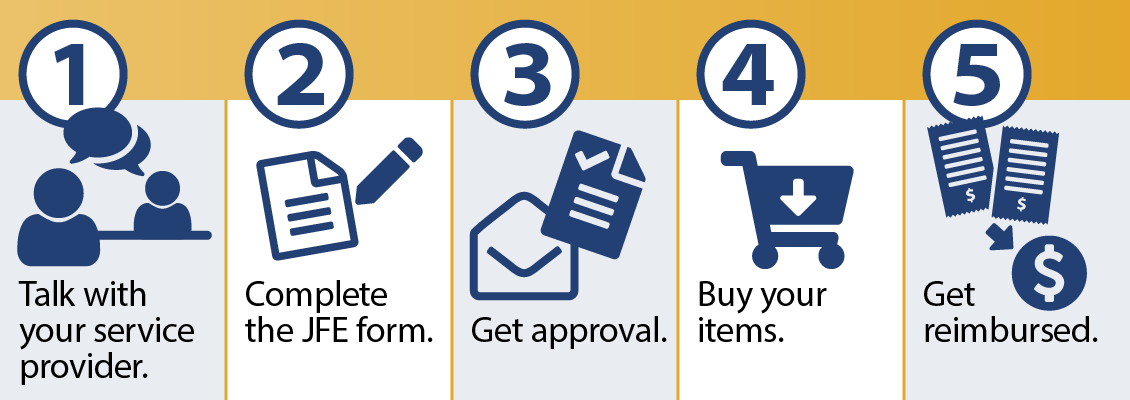Service design and autism services
Date completed: 2019
Client: Ministry of Children and Family Development
Context and questions
The Ministry of Children and Family Development (MCFD) provides funding and information services to families who have a child diagnosed with autism spectrum disorder. In the last five years, the autism program has grown as diagnosis rates increase. In 2014, 1 in 76 children aged 6 to 18 were diagnosed with autism. In 2019, that number grew to 1 in 46. As of August 2019, 17,675 children (ages 0 to18) were registered with the ministry.
The program provides yearly funding and parents must plan and manage their own spending and submit for reimbursements, processes that required a lot of forms and admin time. Parents had to use two separate websites to find information, one focused on funding and one dedicated to information and support. Page views for both sites were low.
In late 2018, MCFD launched MyFamilyServices, a portal for parents to manage their funding online. The autism program had waited a long time for an online solution, yet parents were slow to move from paper to the digital service.
The autism program consists of three teams; funding, information services, and policy. They were all focused on the website as the key to improving their services and increasing portal use. The Service Design Team knew that making the autism website “family-friendly” would include more than a content and UI refresh. Ultimately, the project had four goals:
- Understand the experience of parents, autism service providers, and MCFD staff when accessing or delivering services
- Explore the existing direction of government autism services to see what was working well and what could be improved
- Identify and implement opportunities to improve the service for families and MCFD staff
- Build the capacity of the autism program to take a human-centred approach to service design at the completion of the project
Our approach
Working together, the autism program and the Service Design Team set out to identify the current parent journey and understand the challenges families experience when accessing services and funding.
The project included six key phases:
- In-depth field research. The team travelled around the province to speak with parents, social workers, service providers, and internal staff. The team spent extra time recruiting parents at different stages of their autism journey. This included parents who were still waiting for a diagnosis, families who had recently received a diagnosis and were new to using the funding program, and experienced families who had been accessing services and funding for multiple years. During this phase, the team spoke with 53 people in eight locations


- Creation of user artefacts. The team came together to analyze all the interview transcripts. The research findings revealed that parents were struggling to understand the program and funding rules, no matter what stage of the autism journey they were at. The team created journey maps and user personas to capture the real-life challenges that come with an autism diagnosis; availability of medical professionals, the education system, and the emotional impact on a family. Working with a content strategist, design principles were then drafted to guide the creation and prototyping of new web content
- Measurement of current internal processes. Research also showed that parents spent a lot of time submitting funding forms and MCFD staff spent a lot of time processing the forms once they arrived at their office. Parents told us they didn’t know why their forms took so long to process and were often returned with errors. MCFD staff didn’t have a clear picture of the most common mistakes. The Service Design Team shadowed MCFD staff to create a measurement prototype. Using the prototype, frontline staff tracked errors, denials, and form processing times for one month to establish baselines and plan future measurement work
- Content design within the BC Government CMS. Drawing from user research, existing web content, and the autism policy handbook, the team worked alongside a content strategist to create a new home for autism content within the gov.bc.ca website. Working within the content management system (CMS), the team used images, infographics, and creative page layouts to share information that’s straight-forward and parent friendly

- Prototype testing with real users. The team got back out on the road to test the website with parents, service providers, and social workers. Prototype methods included 1-on-1 interviews, intercepts at autism events, and group testing. Testing helped refine content and vocabulary. Parent-focused language, step-by-step information, and simple navigation were implemented based on prototype findings. During this phase, the team spoke with 29 people in five locations

- Building a better search tool. A key service for parents is the Registry of Autism Service Providers (RASP). Parents use the RASP to find qualified professionals who are eligible to receive ministry funding. The existing search functionality didn’t meet parent needs and the software powering the tool wasn’t compatible with the government CMS. Working with the Government Digital Experience development team, RASP was rebuilt with a focus on parent information needs
Outcomes that matter
The policy is the service
The policy for the autism program lives in a parent handbook – 50 pages of dense information and complex charts. Following user research and measurement tracking, the team deconstructed the handbook and used plain language to make internal rules and processes clear for parents. Much of the key service information in the handbook is now available on the new Autism Website.
One stop shop for autism info and support
The new Autism Website brings a range of information together in one place - families can learn about autism, how to receive a diagnosis for their child, and next steps to access available funding and support programs. Parents can also easily access the funding portal to help them manage their forms and receipts.
Profile personal support
The Autism Information Services team offers one-on-one support in-person and over the phone to help families understand their child’s autism diagnosis, government funding processes, and provincial supports available. This great service now receives higher profile on the Autism Website and staff are building an outreach and engagement plan to connect with even more families.
An ongoing human-centred approach to service design
Autism staff were already taking a human-centred approach to their work and were dedicated to the families they serve. They were deeply involved at every stage of the project, working closely and travelling with the Service Design Team. This hands-on training helped staff see the autism program as a larger service journey, with parents at the heart. We helped them identify an iterative approach to work and broadened their skillset. Now staff are actively testing website improvements with parents.
Artefacts
- Autism website
- Registry of Autism Service Providers (RASP) Search Tool
- Autism Program Design Principles (PDF, 320KB)
- Personas and Content Strategy (Internal documents)
- Road Map and Measurement Map (Internal documents)
